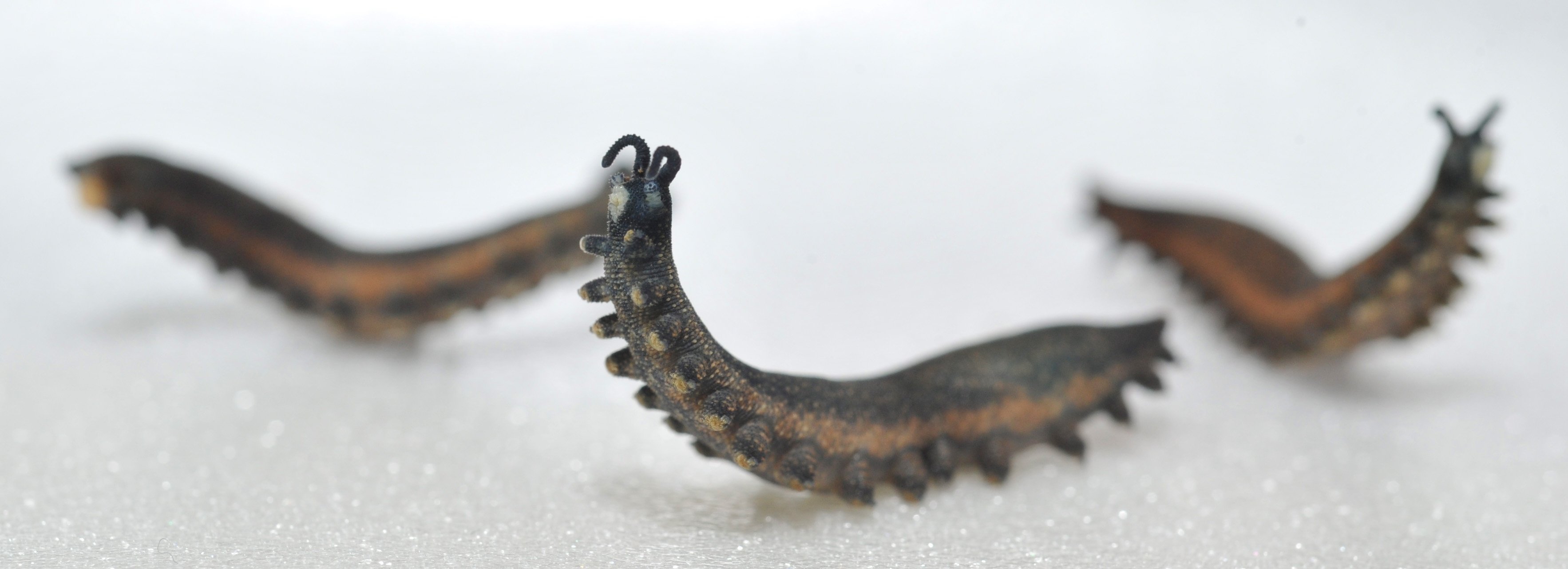
The nocturnal Peripatoides otepoti fires out a sticky protein slime to ensnare its prey before approaching, incising its hapless quarry with sharp fangs and then devouring it.
Massey University School of Natural Sciences Prof Steve Trewick said the "voracious predators" were little known, but came from an ancient lineage that did not have very much surviving diversity.
"When you see them at work, they are really extraordinary."
The soft-bodied invertebrate was one of about 200 known animals on an ancient, distinct branch on the tree of life.
People overseas called them "velvet worms", but because they were not worms, scientists here believed the term was misleading, Prof Trewick said.
They were also called peripatus, but that was taking a genus name from South America.
He said he encouraged people to get the Maori language back into the vernacular, "so ngāokeoke".
Building on earlier work from the 1990s, he described three new ngāokeoke species in the genus Peripatoides in an article published in the scientific journal on entomology Insects this week.
For a long time Peripatoides otepoti was called the Dunedin peripatus, or the Caversham peripatus, and the first population recognised was from Dunedin, but researchers had now shown that the animal’s range extended from the Taieri River to South Canterbury.
Another species found near the Waikaia River at Piano Flat, Southland, was named Peripatoides waikaia. And the third Peripatoides taitonga was found further south.
A tremendous amount of work went into the new names — new data was gathered and new analysis was conducted, Prof Trewick said.
His latest work involved an accumulation of existing data, more sampling, additional genetic data, careful morphological examination — "so looking at these animals" — and input from Dunedin photographer Rod Morris, who "provided some of the nice photographs from the new southern species".
The then-unnamed Peripatoides otepoti was dragged into the spotlight in 2011 during planning for Waka Kotahi NZ Transport Agency’s then-$49 million project to widen the Caversham highway to four lanes.
For the project, the NZTA had to buy land on the northern side of the motorway that had been given over to the peripatus, in an area Forest & Bird had been planting in an attempt to give the animal an environment in which to thrive.
But having a name helped to protect biodiversity.
"Not having a name is quite inconvenient, because it means that a population doesn’t have formal recognition by [the Department of Conservation] or anyone else, and it’s hard to develop conservation plans or accumulate information about threat status, because you don’t know what you’re talking about, you’re just referring to something approximate.
"Having names is an important step — it’s not the end of the process — it’s an important step in the scientific process," Prof Trewick said.
"If they’re not very visible, people think they’re not there.
"Even biologists fall into this — if they find some, their first reaction is ‘Oh my God, we’ve found something that’s never been found before and it’s very unique to this particular spot.’
"But, that’s because they haven’t been looking very much.
"These are animals that hide under the ground a lot of the time, they only come out at night, and only when it’s humid enough, so you just don’t see them very much.
"It doesn’t mean that they’re not there."












